First Drive: All-new 2025 BMW 1-Series
The first generation BMW 1-Series hatchback debuted back in 2004, providing a new – less expensive – entry point for would-be BeeEm owners who fancied having a car with the blue-and-white roundel on the bonnet, but couldn’t quite stretch to a 3-Series.
The first two generations of BMW 1-Series were unique in the compact hatchback arena as they were the only offerings with a driver-focused rear-wheel-drive layout. Every other competitor – Audi A3, Mercedes A-Class, Volkswagen Golf etc – featured the usual front-wheel-drive architecture.
However, BMW changed tack with the third-gen 1-Series, which launched in 2019, switching to a front-drive format in the quest for the optimum packaging benefits this layout provides.
The new fourth-gen model that DriveArabia recently travelled to Munich to sample is a heavy evolution of its predecessor rather than a clean-sheet design. Still, enough has changed to earn it a new F70 designation.
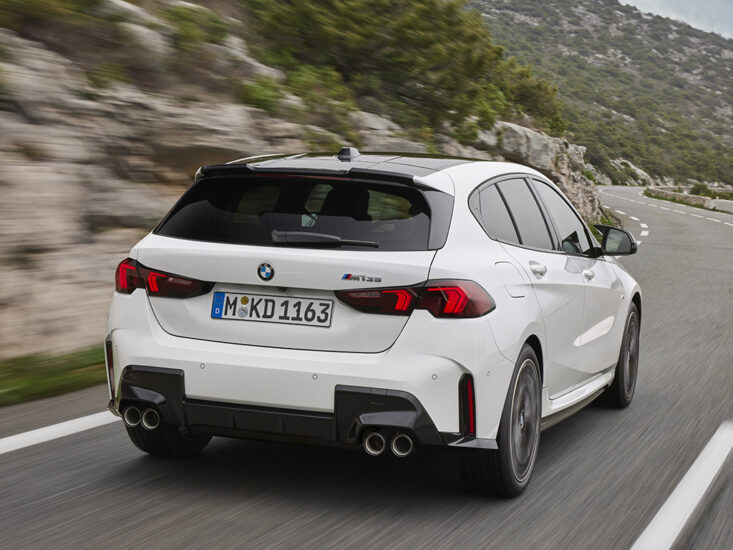
The newbie has a major role to play as the 1-Series has accumulated three million sales over the past two decades (including the 1-Series coupe and cabrio), so it clearly accounts for a big chunk of the brand’s annual sales volumes.
The fourth-gen BMW 1-Series is immediately distinguishable from its forerunner as it’s clothed in a brand-new bodyshell with fresh design language. The face is distinguished by a new grille inspired by the Neue Klasse concept, and it’s flanked by swept-back LED headlights that look a tad squinty to my eye.
BMW’s designers have again opted for cab-back proportions (passenger cell set well back), so the 1-Series still appears as though it’s underpinned by a rear-drive platform, even though it’s not. The overall look is slightly more bulbous than before, and you can each make up your own minds as to whether it’s a step forward aesthetically.
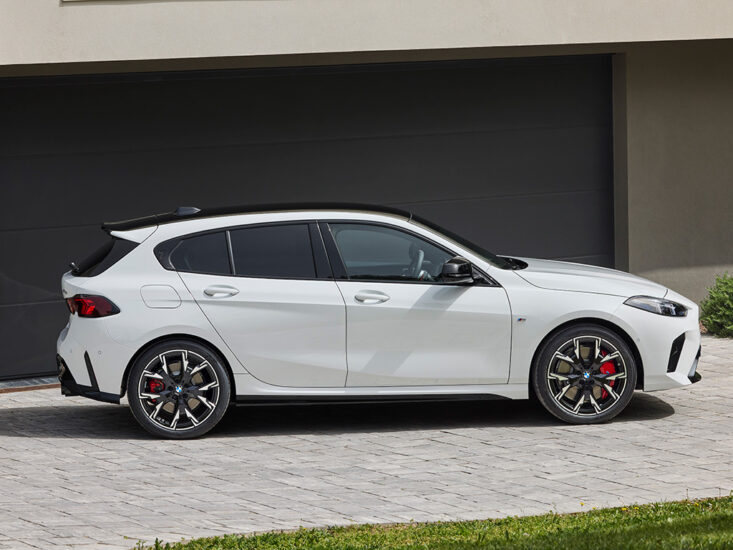
In keeping with the ever-enlarging theme of each new BMW generation, the F70 1-Series has stretched dimensionally. Its length has increased by 42 mm to 4,361 mm, while its height has been bumped up 25mm to 1,459 mm.
Two model variants will initially be on offer when the new BMW 1-Series goes on sale in the UAE before the end of the year – the entry-level 118i is powered by a 1.5-litre three-cylinder turbo engine that pushes out 156 hp and 230 Nm, while the performance-oriented M135i xDrive ups the ante considerably with outputs of 300 hp and 400 Nm.
The M135i xDrive sprints from 0-100 kph in 4.9 seconds and tops out at an electronically governed 250kph, so it’s almost a match for the Volkswagen Golf R, although the Audi RS3 Sportback and Mercedes-AMG A45 S are substantially quicker and more powerful.
All versions of the new 1-Series are equipped with a seven-speed dual-clutch automatic, with the xDrive nomenclature of the M135i reflecting its all-wheel-drive layout.
Although the newbie’s chassis is carried over from its predecessor, it benefits from optimised kinematics, highly preloaded anti-roll bar mounts and new shock absorber technology. The caster of the front wheels has been increased by 20 percent, with BMW’s boffins claiming this provides added directional stability and enhanced steering feedback.
The optional M Sport Package includes the Adaptive M Chassis, which lowers the vehicle by up to 8 mm and adds sport steering and 18-inch alloy wheels. Up to 19-inch rims and an M sport brake system are also available as optional equipment.
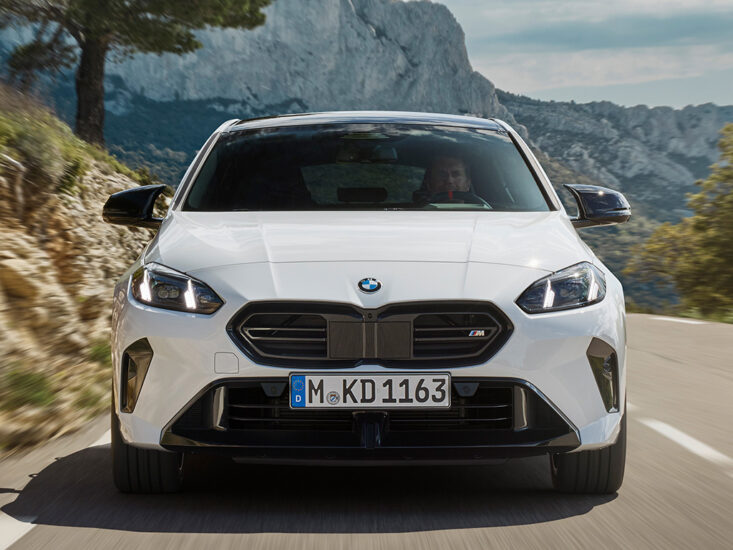
We didn’t get to sample the 118i at the international launch as the 120i (which uses a more powerful version of the same 1.5-litre three-pot turbo motor) was the lowest spec available at the event.
The key takeaways from driving the 120i were that it’s an agile and well-resolved hatchback that remains consistent with BMW’s driver-focused ethos. Heavy rain on our drive day made conditions challenging, but the 1-Series felt securely tied down even on sodden Bavarian country roads.
The 120i has crisp turn-in and a decent tautness to its dynamics, but this doesn’t come at the expense of ride and refinement. On the contrary, it lopes along in relative comfort and silence, so it strikes a nice balance as an everyday, all-weather hatchback.
As usual with contemporary BMWs, the steering wheel rim is much thicker than it needs to be (it feels as though you’re holding a baguette in each hand), and there isn’t a great deal of feedback relayed to your fingertips. That said, the car steers accurately and is easy to place on narrow roads.
Switching up to the M135i xDrive, the range-topper’s added grunt is immediately palpable, as is the hard-edged exhaust note of the 300hp four-cylinder turbo engine.
With its larger engine and all-wheel-drive layout contributing to 125kg of extra mass versus the 1,425kg BMW 120i, the M135i xDrive feels marginally less light on its feet. However, it ultimately offers more cornering grip and better traction out of tight corners (thanks in no small part to the chunky low-profile tyres on the optional 19-inch rims that our test car was equipped with).
The trade-off for the M135’s tauter suspension setup comes in the form of jiggly ride quality over sharp corrugations and a less cossetting feel overall than the 120i. That said, this wouldn’t be so much an issue on the generally billiard-table smooth roads in the UAE.
As you’d expect of a BMW, the ambience inside the cabin is premium and the M135i xDrive, especially, is a cut above most other hatchback offerings in terms of its upmarket feel inside.
New for the latest BMW 1-Series is their latest “Curved Display” cockpit, which houses a 10.25-inch digitised instrument cluster and 10.7-inch infotainment screen within an expansive rectangular glass panel that sits atop the dashboard.
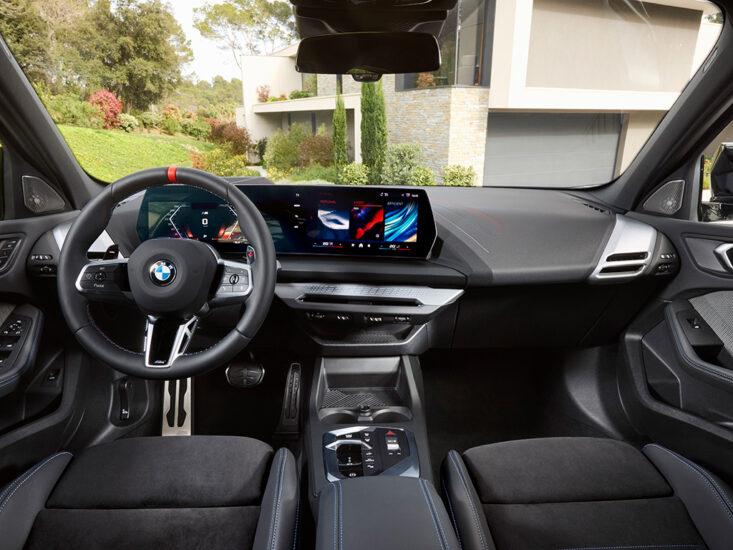
The number of buttons and controls in the cockpit has been significantly reduced, so even the heating and AC settings need to be adjusted via the infotainment screen. Personally, I prefer having physical buttons for the HVAC functions, but each to their own.
The front seats are superbly sculpted (they look good, too), but rear-seat occupants have less to cheer about as the seatback is too upright for genuine comfort. The 120i’s luggage capacity is tight at 300 litres (1,135 litres with the rear seats folded down), but the M135i xDrive is more capacious at 380 litres (1,200 litres with the rear seats down).
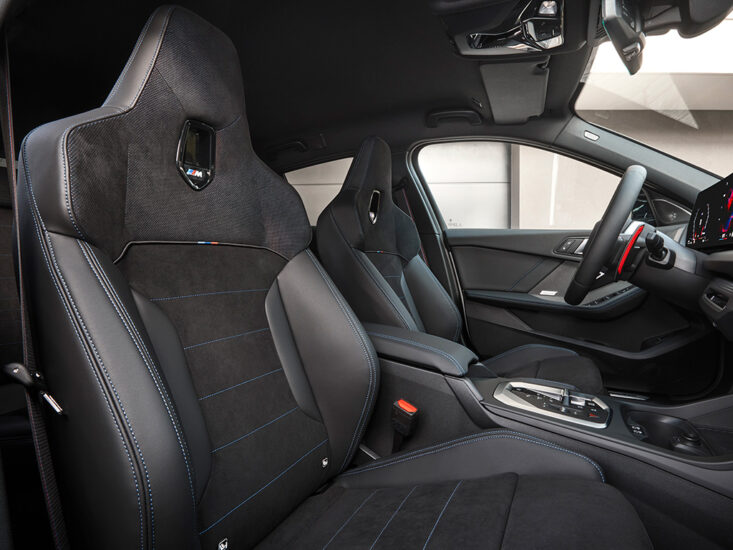
Overall, BMW’s new F70 1-Series ticks most of the boxes you’d expect of a premium compact hatchback. Purists might lament the demise of the old rear-drive 1-Series and the fruity inline six-cylinder engine in the former M135i. Still, the latest generation strikes a credible balance between everyday practicality and sporting panache.
The F70 BMW 1-Series is a pleasant and engaging hatchback, even though it doesn’t get the adrenaline coursing.
Keep track of BMW prices in the UAE in the buyer guide.










There are no comments. Be the first!